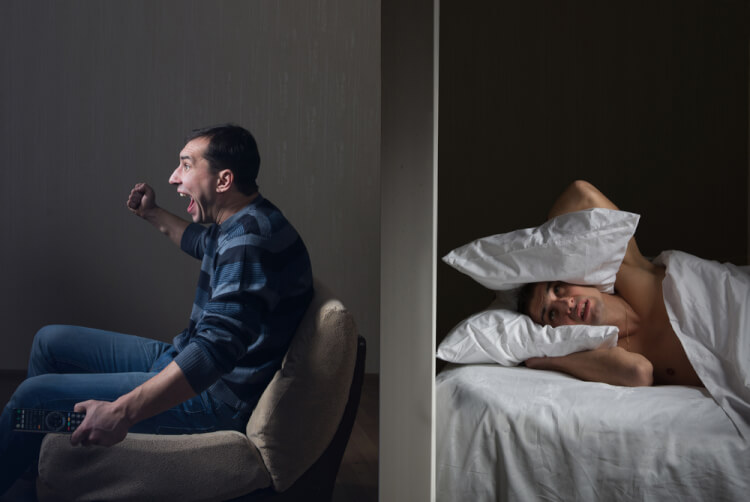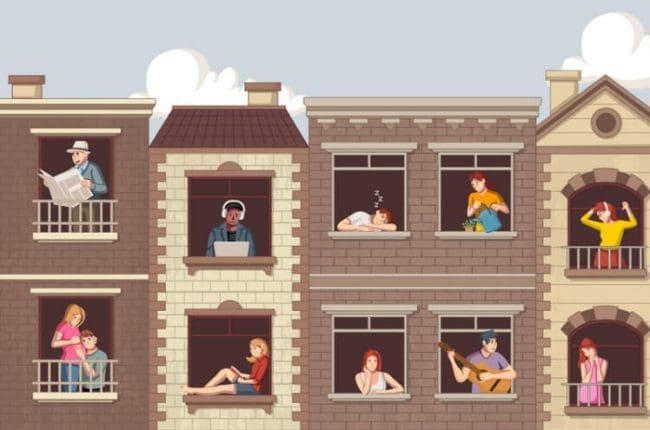It is generally accepted that you will occasionally hear your neighbours in an apartment block, but how much noise should we be expected to put up with?
The occasional tap of high heels on timber or the constant wildebeest migratory stampede of kids running around their upstairs flat?
Should we tolerate the half-deaf oldies downstairs having the radio news on at full blast every morning at 6.30, more readily than we put up with the sub-sonic, crockery rattling rumble from the surround sound of the video viewer next door?
Or is it all part of apartment life’s rich aural tapestry? The simple, not-so-simple, answer is that it depends how disturbing the noise is and that depends, in part, on how easily disturbed you are.
Listening to the gentle tinkle of a distant piano may actually be quite restful while a 10-year-old practising the trumpet may not be quite so relaxing. The muted pop songs from your youth might stir pleasant memories while the doof-doof of hyper-bass dance music might only inspire murderous inclinations.
Every state has its own strata laws and by-laws (or rules) but one common factor is the right to the “peaceful enjoyment” of your lot. That means you are entitled to complain about anything from raised voices to late night washing machines, from loud footsteps to even louder music, if they are persistently disturbing.
Whether or not that complaint results in a satisfactory resolution depends on the nature of the complaint, the people you are complaining to and the vagaries of tribunals and other regulatory bodies.
There are basically three elements in noise transmission in apartment blocks – design, construction and behaviour.
With design, for instance, if the architect has put living areas above bedrooms there’s built-in potential noise nuisance. This can happen when higher floors have fewer apartments with different floor plans from the levels immediately below.
In these cases the chances of noise complaints are greater, especially if the upstairs neighbours suddenly develop a crippling allergy that requires them to lift their boring carpet – the only truly effective noise insulation – and replace it with trendy tiles or timber.
Construction is another variable. The basic Australian building standards are simply not sufficient for modern apartment living and apartment blocks that are built to code, without a decibel of soundproofing more than required by the regulations, are going to be noisy.
Finally there’s behaviour. Most states and local councils have fairly strict rules about, for instance, loud music late at night that can be heard in other homes.
Some apartment residents take these hours as permission to be as noisy as they want the rest of the time. Sadly for them, these local laws operate as well as strata by-laws, not instead of.
So no, you can’t blast your video games or dance music at full volume until the curfew. However, if you go past that, the police can and often do get involved.
But what can you do if you are noise averse? Don’t buy or rent a flat where your bedroom is below or next to another unit’s lounge or bathroom, would be a start.
Check the strata scheme’s minutes to see if there are any unresolved noise issues in the block.
And if you are an owner in a “noisy” building – one that hasn’t been designed or constructed to minimise noise transmission – start looking at by-laws restricting things like hard floors above bedrooms, TVs attached to adjoining walls and restrictions on when people can use washing machines.
And tell noisier residents if they’re becoming a nuisance. You don’t need to be overly aggressive or forceful; after all, no one can possibly know how loud they sound in another flat.
A version of this column first appeared in the Australian Financial Review.




